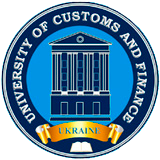IMPROVEMENT OF THE TECHNOLOGICAL PROCESS OF ROUTE MOVEMENT
Abstract
The problem of reducing fuel consumption by buses, taxis and trucks is urgent. Fuel economy and efficient use of the power resources of the motor vehicle can significantly reduce fuel costs and maintenance. In today's passenger transportation, fuel and lubricant costs, the savings on these consumables make it possible to significantly reduce transportation costs for transport companies and trucking companies.
The purpose of the study is to analyze the situation on the road, helping drivers to slow down and accelerate with calculated efficiency. For the stationary route, you can use a terrain map and relief, allowing the driver to release gas in advance when approaching the turns, forks and stops where you have to brake. Analyzing the route parameters and engine modes allows you to provide guidance on the choice of speed mode and transmission. As a result, there is no need for frequent accelerations and brakes, which has a positive effect on fuel consumption.
The route under consideration identifies the relief features of the route, which, above all, enables the development of a more efficient driving schedule of the vehicle, which in turn will allow the driver to use the engine power with maximum benefit based on these data. External velocity characteristics, traction-velocity balance and fuel and economic characteristics of the engine of the vehicle under consideration are calculated. Based on this data, the driving mode for each section of the route is selected to match the lowest fuel consumption and engine power. The problem with the implementation of this plan is to communicate to the driver information on the optimal use of engine power, depending on road conditions. On the one hand, an application can be developed for the driver that will offer driving modes, but control of the parameters and the reaction of the driver in real operating conditions may not be effective. Therefore, the approach implemented in the work is rather a tool for automating the movement process. Obviously, after the full automatic movement of the vehicle is realized, the next steps will be the optimization of transportation costs.
References
2. Principi formuvannya mіs'koї transportnoї sistemi [Principles of formation of urban transport system], site, available at: https://konspekta.net/lek-16024.html [Ukraine]
3. Marshrutna sistema mіs'kogo pasazhirs'kogo transport [Route system of urban passanger transport], site, available at: https://studfiles.net/preview/ 5609178/page:26/ [Ukraine]
4. Bespalov D.A. (2015) Osnovnі principi stvorennya transportnoї modelі mіsta [Basic principles of creating a city transport model], site, available at: https://bespalov.me/2015/10/07/osnovni-prynzypy-stvorennya-transportnoi-modeli-mista/ [Ukraine]
5. Bernstajn V. (2016) Transportna koncepcіya Dnіpra [Transport concept of the Dnieper], site, available at: ttps://dengi.informator.ua/2016/12/21/ transportnaya-kontseptsiya-dnepra-ochevidnoe-neveroyatnoe-ot-gorsoveta/ [Ukraine]
6. Gagen A.(2017) Transportne planuvannya: meta ta іnstrumenti [Transport planning: goals and tools], site, available at: http://urbanua.org/ eksperty/ukrayinski-eksperty/95 [Ukraine]
7. Fіrsov O.D. and A.N. Bіblya (2015) Proektuvannya іntelektual'noї transportnoї sistemi mіsta: stattya [Designing the city`s intelligent transportation system], article, AMSU. Series: “Technical Sciences ”, vol. 1 (53), 12 p. [Ukraine]
8. Mozlevich G.YA. and D.V. Rizdvanec'kij (2013) Optimіzacіya funkcіonuvannya mіs'kogo transportu shlyahom vprovadzhennya іntelektual'nih transportnih sistem [Optimization of the functioning of urban transport through the introduction of intelligent transport systems], article , pp. 2-17 [Ukraine]
9. Kochegurova E. A. and YU. A. Martinova (2013) Optimіzacіya skladannya marshrutіv gromads'kogo transportu pri stvorennі avtomatizovanoї creating an automated decision support system], journal Izvestiya Toms'kogo polіtekhnіchnogo unіversitetu.,vol. 5 (323), pp. 56-57. [Ukraine]
10. Melіhov V. A. and V. A. Gudkov (2011) Principi formuvannya marshrutnoї merezhі [Principles of the route network formation], site, available at: http://www.cyberleninka.ru/article/n/printsipy-formirovaniya-marshrutnoy-seti
[Ukraine]
11. Bojko G. V. (2006) Metodika optimіzacії strukturi transportu dlya obslugovuvannya mіs'kih pasazhirs'kih perevezen' [A method of optimization of the structure of transport for servicing urban passenger transportation], tutorial, VDTU, 162 p. [Ukraine]
12. Vogulyakova A. E. Upravlіnnya ruhom mіs'kogo transportu [Urban traffic managment],site, available at:http:// www.beriki.ru/2008/10/18/upravlenie-dvizheniem-gorodskogo-transporta-chast-1 [Ukraine]
13. Іntelektual'na transportna sistema Moskvi (2012) [Intelligent transport system of Moscow],site, available at: http://www.gucodd.ru/index.php/component/ content/article/58 [Ukraine]
14. Komarov V. V. and. A. Garagan (2012) Arhіtektura і standartizacіya telematichnih і іntelektual'nih transportnih sistem. Zarubіzhnij dosvіd і vіtchiznyana praktika [Architecture and standardization of telematics and intelligent transport systems.Foregin experience and domestic practic], journal, Energіya , vol. 8, pp.12-35. [Ukraine]
15. Guzenko A. V. (2009) Rozvitok mіs'kogo pasazhirs'kogo transportu megapolіsu: problemi ta perspektivi [Development of urban passenger transport of the metropolis: problems and perspectives], journal Vіsnik Toms'kogo derzhavnogo unіversіteta, vol.321, pp/ 64-85. [Ukraine]
16. Enin D. V. and M. A. Bocharov Udoskonalennya efektivnostі roboti mіs'kogo pasazhirs'kogo transportu vіdpovіdno do zadanogo rozkladu ruhu [Improving the efficiency of urban passenger transport in accordance with the set schedule], site, available at: http://www.science-bsea.narod.ru/2003/ekonom_2003/ enin.htm [Ukraine]
17. Alekseev O. P. and S. V. Pronіn (2007) Іntelektualіzacіya transportnih sistem v zadachah rozvitku velikih mіst [Intellectualization of transport systems on the problems of the development of large cities], journal Avtomobіl'nij transport, vol. 21, available at: http://www.cyberleninka.ru/article/n/ intellektualizatsiya-transportnyh-sistem-v-adachah-razvitiya-bolshih-gorodov [Ukraine].

 ISSN
ISSN 




